Waymo, formerly Google's self-driving car project, is an autonomous driving technology company and a subsidiary of Alphabet Inc. Headquartered in Mountain View, California, Waymo operates commercial robotaxi services in Phoenix, San Francisco, Los Angeles, Atlanta, and Austin. Services are also available in Silicon Valley on a waitlist basis. By April 2025, Waymo provides over 250,000 paid rides weekly, totaling over 1 million miles monthly, demonstrating substantial growth and market presence in the autonomous vehicle industry.
2004: Ghost Rider built for DARPA Grand Challenge
In 2004, Levandowski's Berkeley team built the autonomous two-wheeled motorcycle Ghost Rider for the DARPA Grand Challenge, which Levandowski later donated to the Smithsonian.
2005: Stanford's Stanley entry in the 2005 DARPA Challenges
In 2005, Thrun and a team built Stanley, Stanford's entry in the DARPA Challenges, before working at Google.
2005: Stanford Racing Team competed in DARPA Grand Challenge
In 2005, the Stanford Racing Team, which Waymo traces its origins to, competed in the Defense Advanced Research Projects Agency (DARPA) Grand Challenge.
2007: Stanford's Junior entry in the 2007 DARPA Challenges
In 2007, Thrun and a team built Junior, Stanford's entry in the DARPA Challenges, before working at Google.
2007: Stanford Racing Team competed in DARPA Grand Challenge
In 2007, the Stanford Racing Team, which Waymo traces its origins to, competed in the Defense Advanced Research Projects Agency (DARPA) Grand Challenge.
February 2008: Request to borrow Ghost Rider for Prototype This!
In February 2008, a Discovery Channel producer for the documentary series Prototype This! requested to borrow Levandowski's Ghost Rider, the autonomous two-wheeled motorcycle, later offering to retrofit a Toyota Prius as a self-driving pizza delivery car for the show.
December 2008: Pribot delivers pizza across San Francisco Bay Bridge
In December 2008, an episode of Prototype This! aired, depicting Pribot delivering pizza across the San Francisco Bay Bridge under police escort. Levandowski retrofitted a Toyota Prius for the show.
2008: Street View team launched project Ground Truth
In 2008, the Street View team launched project Ground Truth, to create accurate road maps by extracting data from satellites and street views.
January 2009: Google's self-driving technology development began
In January 2009, Google began the development of self-driving technology, led by Sebastian Thrun and Anthony Levandowski.
January 2009: Google's self-driving car program greenlit
In January 2009, the success of the Prototype This! project led Google to greenlight Google's self-driving car program.
January 17, 2009: Google's self-driving technology development began
On January 17, 2009, Google's development of self-driving technology began at Google X lab, run by co-founder Sergey Brin. The project was launched by Sebastian Thrun and Anthony Levandowski.
2009: Google spent $1.1 billion on the project
Between 2009 and 2015, Google spent $1.1 billion on the self-driving project.
October 9, 2010: New York Times revealed Google's project
On October 9, 2010, the New York Times revealed the existence of Google's self-driving car project. Google announced its initiative later the same day.
October 2010: Google reveals self-driving project
In October 2010, after almost two years of road testing, Google revealed its self-driving car project to the public.
2010: Lawmakers expressed concerns over regulating autonomous vehicles
Starting in 2010, lawmakers in various states expressed concerns over how to regulate autonomous vehicles.
2011: Google acquired 510 Systems and Anthony's Robots
In 2011, Google acquired 510 Systems and Anthony's Robots for an estimated US$20 million. Levandowski's vehicle and hardware, and Stanford's AI technology and software, became the nucleus of the project.
March 1, 2012: Nevada law regulating autonomous vehicles took effect
On March 1, 2012, a Nevada law regulating autonomous vehicles went into effect. Google had been lobbying for such laws.
May 2012: First US license for a self-driven car
In May 2012, a modified Prius was licensed by the Nevada Department of Motor Vehicles (DMV), making it the first US license for a self-driven car. The car was "driven" by Chris Urmson with Levandowski in the passenger seat.
January 2014: Google granted patent for transportation service
In January 2014, Google was granted a patent for a transportation service funded by advertising that included autonomous vehicles as a transport method.
August 2015: John Krafcik hired as CEO
In August 2015, Google hired former Hyundai Motor executive, John Krafcik, as CEO of the self-driving project.
2015: Google spent $1.1 billion on the project
Between 2009 and 2015, Google spent $1.1 billion on the self-driving project.
2015: Testing of Firefly prototype
In December 2014, Google unveiled a Firefly prototype that was planned to be tested on San Francisco Bay Area roads beginning in early 2015.
2015: World's first driverless ride
In Fall 2015, Google provided "the world's first fully driverless ride on public roads".
March 2016: General Motors acquired Cruise Automation
For comparison, the acquisition of Cruise Automation by General Motors in March 2016 was for $500 million.
May 2016: Google and Stellantis announced an order of 100 Chrysler Pacifica hybrid minivans
In May 2016, Google and Stellantis announced an order of 100 Chrysler Pacifica hybrid minivans to test the self-driving technology. In May 2016, the company opened a technology center in Novi, Michigan.
August 2016: Uber acquired Otto
For comparison, Uber's acquisition of Otto in August 2016 was for $680 million.
December 2016: Project renamed Waymo
In December 2016, the Google self-driving car project was renamed Waymo and spun out of Google as part of Alphabet.
December 2016: Project changed its name to Waymo
In December 2016, the project changed its name to Waymo and spun out of Google as part of Alphabet. The name was derived from "a new way forward in mobility".
October 2017: Waymo began testing minivans
In October 2017, Waymo began testing minivans without a safety driver on public roads in Chandler, Arizona.
2017: Waymo highlighted four business uses
In 2017, Waymo highlighted four specific business uses for its autonomous tech: robotaxis, trucking and logistics, urban public transportation, and passenger cars.
March 2018: Jaguar Land Rover announced Waymo order for I-Pace electric SUVs
In March 2018, Jaguar Land Rover announced that Waymo had ordered up to 20,000 of its I-Pace electric SUVs at an estimated cost of more than $1 billion.
May 2018: Alphabet announced plans to add Pacifica Hybrid minivans
In late May 2018, Alphabet announced plans to add up to 62,000 Pacifica Hybrid minivans to the fleet. Also in May 2018, Waymo established Huimo Business Consulting subsidiary in Shanghai.
April 2019: Plans for vehicle assembly in Detroit
In April 2019, Waymo announced plans for vehicle assembly in Detroit at the former American Axle & Manufacturing plant, bringing between 100 and 400 jobs to the area.
March 2020: Waymo Via launched
In March 2020, Waymo Via was launched after the company's announcement that it had raised $2.25 billion from investors.
May 2020: Waymo raised additional funding
In May 2020, Waymo raised an additional $750 million.
July 2020: Exclusive partnership with Volvo
In July 2020, the company announced an exclusive partnership with auto manufacturer Volvo to integrate Waymo technology.
October 2020: Waymo first public service without safety driver
In October 2020, Waymo became the first company to offer service to the public without safety drivers in the vehicle.
April 2021: Krafcik replaced by co-CEOs
In April 2021, Krafcik was replaced by two co-CEOs: Waymo's COO Tekedra Mawakana and CTO Dmitri Dolgov.
June 2021: Waymo raised additional funding
In June 2021, Waymo raised $2.5 billion in another funding round, with total funding of $5.5 billion.
August 2021: Consumer testing program launched in San Francisco
Waymo launched a consumer testing program in San Francisco in August 2021.
2021: Waymo partnership first announced with Zeekr
In July 2024, Waymo began testing its sixth-generation robotaxis which are based on electric vehicles by Chinese automobile company Zeekr, developed in a partnership first announced in 2021.
May 2022: Pilot program seeking riders in downtown Phoenix
In May 2022, Waymo started a pilot program seeking riders in downtown Phoenix, Arizona. In May 2022, Waymo announced that it would expand the program to more areas of Phoenix.
June 2022: Partnership with Uber
In June 2022, Waymo announced a partnership with Uber, under which Waymo will integrate its autonomous technology into Uber's freight truck service.
December 13, 2022: Waymo applied for final permit
On December 13, 2022, Waymo applied for the final permit necessary to operate fully autonomous taxis, without a backup driver present, within the state of California.
2022: Waymo raised US$5.5 billion
By 2022, Waymo raised US$5.5 billion in multiple outside funding rounds.
January 2023: Waymo staff affected by Google's layoffs
In January 2023, The Information reported that Waymo staff were among those affected by Google's layoffs of around 12,000 workers. TechCrunch reported that Waymo was set to kill its trucking program.
2023: Waymo One area coverage increased
In 2023, coverage of the Waymo One area was increased by 45 square miles (120 km), expanding to include downtown Mesa, uptown Phoenix, and South Mountain Village.
2023: Cruise operations suspended
In October 2024, the New York Times described Waymo as being "far ahead of the competition", in particular after Cruise had to suspend its operations after an accident in 2023.
July 2024: Waymo began testing sixth-generation robotaxis
In July 2024, Waymo began testing its sixth-generation robotaxis which are based on electric vehicles by Chinese automobile company Zeekr, developed in a partnership first announced in 2021. They were anticipated to reduce costs, at a time when Waymo was operating at a loss.
October 2024: Waymo closed funding round
In October 2024, Waymo closed a $5.6 billion funding round led by Alphabet, aimed at expanding its robotaxi services, bringing its total capital to over $11 billion. Around that time, the New York Times described Waymo as being "far ahead of the competition", in particular after Cruise had to suspend its operations after an accident in 2023.
2024: Waymo raised $5.6 billion funding
In 2024, Waymo raised $5.6 billion in funding.
April 2025: Waymo's ride statistics
As of April 2025, Waymo offers over 250,000 paid rides per week, totaling over 1 million miles monthly.
September 2025: Waymo integrated into Chandler's public microtransit service
In September 2025, Waymo and the city of Chandler, Arizona announced that Waymo would be integrated into Chandler's public microtransit service.
November 2025: Waymo expanded routes to include freeways
In November 2025, Waymo expanded its routes to include travel on freeways for selected riders.
November 2025: Waymo robotaxis in service
As of November 2025, Waymo has 2,500 robotaxis in service.
Mentioned in this timeline
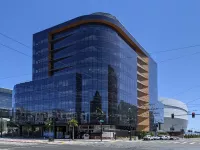
Uber Technologies Inc is a multinational transportation company headquartered in...
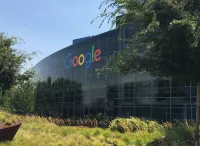
Google LLC is a multinational technology company specializing in online...
California is a U S state on the Pacific Coast...
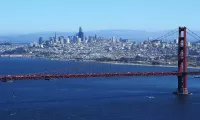
San Francisco is a major commercial financial and cultural hub...
Japan is an East Asian island country situated in the...

Los Angeles is the most populous city in California and...
Trending
7 days ago Waymo self-driving car navigates through active police standoff with passenger onboard, creating tense situation.

1 month ago Aryna Sabalenka aims for first WTA Finals title amid strong competition in Riyadh.

2 months ago Jon Hamm: From Mad Men to a Beloved Actor
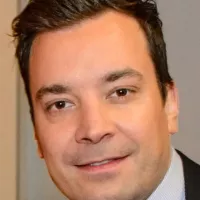
7 months ago The Weeknd's Late Night Interview Debut with Fallon, Bart Simpson's Fallon Ignorance.

Steve Nash is a retired Canadian professional basketball player and former head coach of the Brooklyn Nets Renowned for his...

7 months ago Bridget Fonda's weight loss stuns after years away; spotted with Danny Elfman.
Popular
Matt and Ross Duffer known as the Duffer Brothers are...

Candace Owens is an American conservative political commentator and author...

Ilhan Omar is an American politician currently serving as the...

XXXTentacion born Jahseh Dwayne Ricardo Onfroy was a controversial yet...
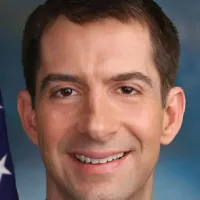
Tom Cotton is an American politician and Army veteran currently...
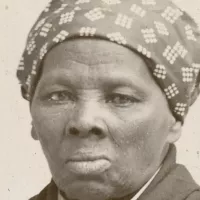
Harriet Tubman was a pivotal American abolitionist and social activist...